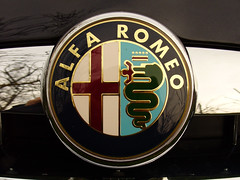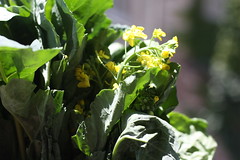 |
| Grilled scampi or langoustines at Ristorante Al Faro in Venice, Italy. |
The first Jewish ghetto was set up in Venice, Italy, in 1516. Today, most of the Jews have moved out, only to be replaced in the past 10 years by Orthodox from the United States, but you can still visit old synagogues and dine on some specialties of the Italian Jews.
I drove to Venice from Milan on Sept. 13, parked in a garage and took the first of many vaporetti (small passenger ferries) to Lido di Venezia, an island beach resort on the Adriatic Sea, where I stayed at the Viktoria Palace Hotel.
For the next three days, I took ferries, walked and crossed many canal bridges to explore Venice and the Jewish Quarter, including three old synagogues, the first I've seen on the top floors of buildings.
One highlight was a big lunch of Jewish specialties in the courtyard of Le-Balthazar, a kosher restaurant and caterer in the new part of the quarter.
The fixed-price, 20-euro menu started off heavy, with an appetizer of moist potato kugel, followed by vegetable couscous with raisins and pine nuts.
My entree was a fish fillet in a mildly spicy sauce of fresh tomatoes, served with sauteed spinach.
Honey cake was included, but I was able to substitute a small cup of espresso. The meal cost about $25.60 at $1 equals 78 euro cents.
Le-Balthazar, Campo Ghetto Nuovo, Venice, Italy.
This restaurant is on a square with a memorial to a relatively small number of Jews who were deported to concentration camps during World War II.
There were several metal reliefs showing scenes from the round-up, and some of the victims' names and ages were carved into wooden planks: Vittorio Moise Gentilli, 50; Eugenia Franco Pitteri, 62; Ida Morza, 72; and Alice Coen, 71.
Ristorante Al Faro (The Lighthouse) wasn't kosher, but I had a bountiful lunch of scampi (pictured above), followed by a large Mediterranean or Greek salad -- more than enough food to share with another person.
The grilled scampi were served on a bed of chopped arugula with wedges of lemon (18 euros).
The salad was 8.50 euros, water was 3 euros and bread was 1.80 euros, for a total of 31.30 euros or about $40.
Ristorante Al Faro, Campo del Ghetto Vecchio 1181, Venice, Italy; +39-041-716871.
My first meal in the quarter was at a table outside Ai Quattro Rusteghi, which is on the ground floor of one of the synagogue buildings.
Here, I had thin pasta in a fragrant pesto sauce, fish and salad, with a glass of wine, water and bread, for 22.50 euros or about $29.
Ai Quattro Rusthegi, Campo Ghetto Nuovo, Venice, Italy; +39-041-715160.
-- VICTOR E. SASSON

















